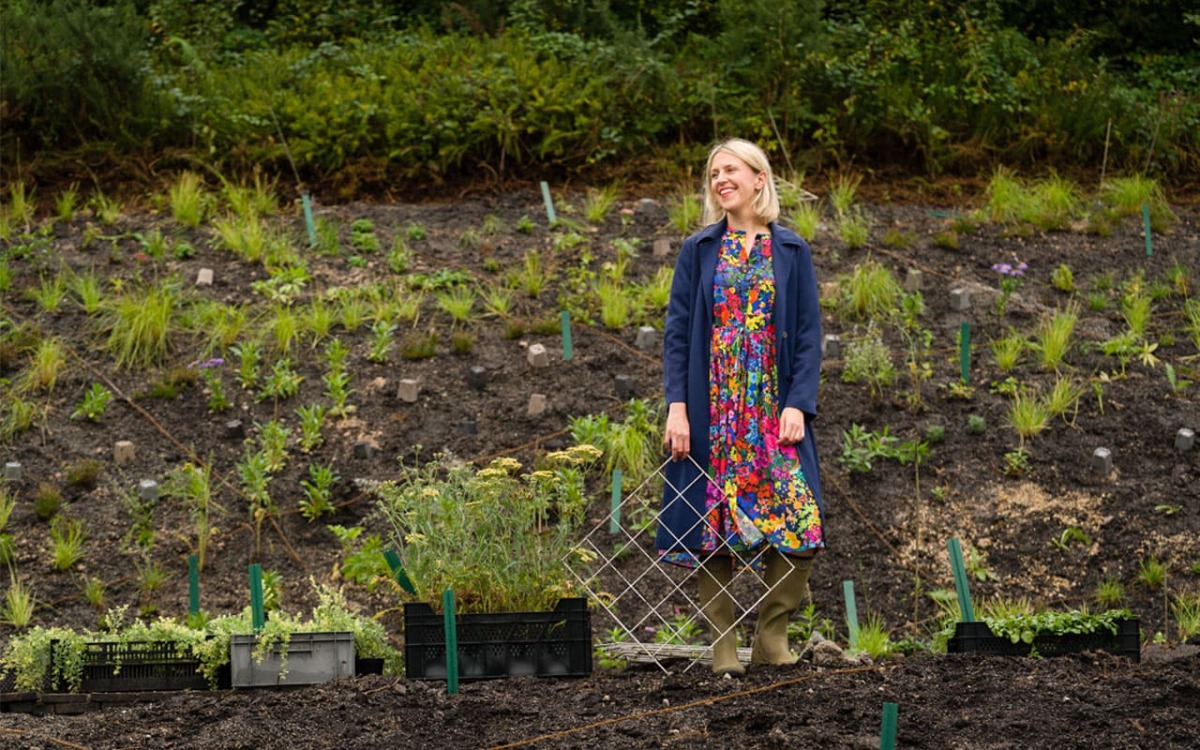
The garden is an allegory for humanity
Alexander Burenkov
An interview with multidisciplinary artist Alexandra Daisy Ginsberg
The complex entanglements between nature, technology, and the human desire to “improve” the world is in the core of practice of multidisciplinary artist Dr. Alexandra Daisy Ginsberg who explores themes such as artificial intelligence, synthetic biology, biodiversity, and the ecological consequences of innovation. Her work often challenges anthropocentric perspectives, asking what it might mean to design for the nonhuman, especially amid accelerating environmental crises. For over a decade, Ginsberg has engaged deeply with the field of synthetic biology, helping to shape new roles for artists and designers within the sciences. She is the lead author of Synthetic Aesthetics: Investigating Synthetic Biology’s Designs on Nature (MIT Press, 2014), and completed her PhD by practice—Better—at the Royal College of Art, critically examining how ideals of “better” futures shape our design choices. Her academic background spans architecture at the University of Cambridge, a design MA from the RCA, and time as a visiting scholar at Harvard. In 2023, Ginsberg was awarded the European Commission’s S+T+ARTS Grand Prize for Artistic Exploration for Pollinator Pathmaker, an experimental living artwork designed to prioritize the needs of pollinators over humans. Installed in multiple locations including Berlin’s Museum für Naturkunde, London’s Serpentine, and the Eden Project in Cornwall, the work exemplifies her ongoing commitment to art as a form of ecological activism. We spoke with Ginsberg about the role of synthetic biology and digital tools in ecological restoration, the ethics of designing with and for other species, and how art might respond to the urgency of the sixth mass extinction.
Rewilding advocates argue that many ecosystems as we know them are depleted, lacking in wildlife and the diverse range of plants and fungi they could support. Through rescinding control, human beings have the ability to allow natural processes to resume, and for landscapes to restore their own balance. The idea of relinquishing control to nature, and of reversing some of the damage done by humans, holds true across many branches of ecology and contemporary conservation. Learning to love rewilding often involves extracting one’s thinking from the traditional linear, anthropocentric modes of thought predominant in Western politics, economics and social relationships. Sometimes a degree of creativity is required for this. Tell me, please, how you became interested in the ideas of rewilding and when it entered your artistic practice? Am I right that it started for you with an artwork, Designing for the Sixth Extinction, commissioned by Science Gallery, Dublin for Grow Your Own… Life After Nature, which you co-curated in 2013?
Designing for the Sixth Extinction used manipulated digital photographs, drawings, writing and models to think about synthetic biology’s potential impact on biodiversity and conservation. I imagined the release of synthetic fungus, bacteria, invertebrates and mammals into the wild to support endangered natural species and ecosystems – an act that raises ethical questions. I had been to a conference held between conservationists and synthetic biologists in 2013; it was the first time they’d formally come together and it was the first time I’d been exposed to this new conversation between two very different communities. They moved onto discussing synthetic biology beyond the industrial applications which by then were familiar – for example, engineering organisms to produce useful chemicals for humans, or engineering plants – to talk about a different kind of application: attempting to use it to protect the natural environment. By that point, I had spent five years researching synthetic biology, and I was fascinated by this beautiful paradox being raised: synthetic forms of life being presented as a “solution” to protect nature itself. In a way, it was a very poetic way to delineate the human-made distinction between the natural and the unnatural and open the question as to what that means.
So, my take comes from a different origin to learning about rewilding as a practitioner of conservation. But the conversation was in itself a very beautiful – or perhaps “beautiful” is the wrong word – a very powerful microcosm of the much bigger, broader factions. The conservationists appeared to be pessimistic and anxious. I see myself in that camp as well, concerned about protecting the natural environment; there is a desire to turn back the clock or to try and stop humanity’s advance into further exploiting resources. Even this language around nature as resource is problematic: nature is not a resource for us to exploit, it’s the world that is. By contrast, the synthetic biologists I’d been working with and studying and exploring their ideologies were coming at it with very solution-focused, engineering- or construction-based ideas of rebuilding the world, or building the world anew. In a way, nature for them is seen as a repository for material to build new things. It was interesting to me to see these two groups come together, talking about whether the one could help the other. There was this sort of implied service – or what’s the word for it? - deigning to help the other. One synthetic biologist said something along the lines of “God, you’re all so depressed! My door is always open. Just come and knock on my door and let’s see what we can do together!” That’s such an extraordinary way to talk about something that’s so complex such as protecting our natural environment: seeing it as a problem where we just need technological solutions to fix it. Rewilding itself is also interesting in this context – sitting on the spectrum of conservation approaches – because it also contains this “fixing” idea, even if you don’t have the right organism you can find something else to make an ecosystem work again….
In rewilding, there’s an idea of proxies, where a missing species could be replaced by something else that serves the same function, which again is an artificial solution-oriented approach. That also opens up what the organisers of the 2013 conference, conservation scientist Kent Redford and geographer Bill Adams, discuss in their book Strange Natures: Conservation in the Era of Synthetic Biology (published by Yale, 2021). They explore the boundary between the natural and unnatural, and the idea that you could just pop something in to solve the problem itself is very anthropocentric way of looking at it. At the conference, the conversation moved from the problems that synthetic biology may present to conservation, to “Could synthetic biology help?” For example, could we engineer corals and release them into the wild? Indigenous speakers spoke alongside scientists from different disciplines, including genetic engineers working on coral, like Madeleine van Oppen, who’s working in Australia on engineering coral to release into the wild and replace reefs that can’t cope in warmer waters. This idea of “What does it mean to have a living thing that sits on the border between engineered and natural to conserve and protect the natural?” became very interesting to me. Rewilding itself is contentious, and that’s something that Bill and Kent look at in their book as well, asking “What is a wilderness?”. Wilderness is a human created idea as it requires a boundary with the non-wilderness to even exist. With conservation, where are we trying to rewind the clock to? Any act of preservation is fundamentally artificial because you’re fiddling with time, and biology and evolution don’t stand still. From an intellectual point of view, this whole subject is really intriguing. But then, you know, when I’ve gone to see rewilded landscapes, they look a lot better than tracts of industrial agriculture. [laughs] It seems like rewilding is one of many approaches that can be important and helpful, even if you don’t have the right species, to create complex habitats.
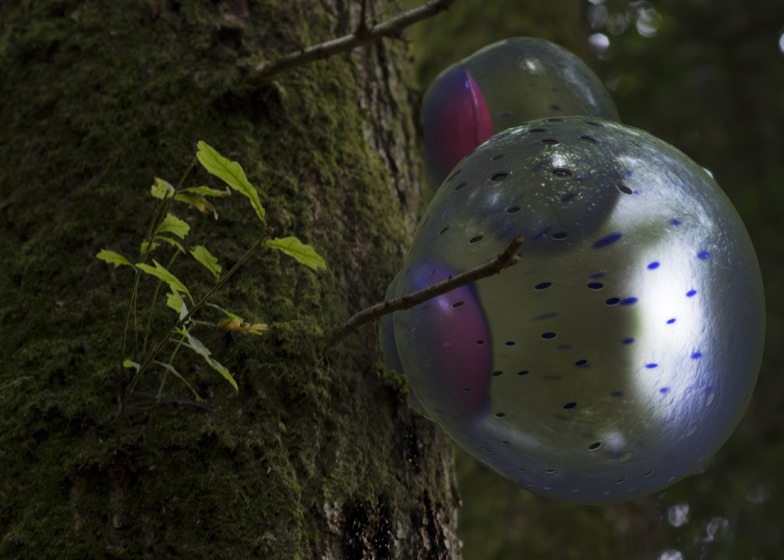
You ask: “Could we tolerate rewilding — the conservation movement that lets nature take control — using synthetic biology to make nature ‘better’? Letting synthetic biodiversity loose to save the nature that we idealise would disrupt existing conventions of preservation.” How has your attitude to these issues changed almost 10 years after you started working on this project? What discoveries in synthetic biology have forced you to reconsider your past attitudes and consider these topics in a new way? And in general, does your romance with synthetic biology continue?
It was never a romance; I’d like to make that quite clear! I was and am still very interested in synthetic biology and I had an extraordinary opportunity to embed myself in it over a decade and to see how a field of technoscience is built. My interest was how visionaries created their visions of what a better world looked like and then invent technologies to manifest that world. Synthetic biology raises the fundamental questions of “What is nature?” The ideology is to manipulate the very stuff that we’re made of, coding DNA to engineer biology, to make useful things for humans. And within me, within all of us perhaps, is this sense of revulsion at modifying the natural. We see this theme repeating in stories like the Golem and Frankenstein’s monster. This innate feeling is interesting: Why do I have this impulse to reject and yet still be thrilled by the innovation? I’m fascinated by this paradox between the human desire for innovation – the newer, the better – as we reject what’s come behind us. There’s a failure of preservation and protection of nature in the modern Western post-Enlightenment human ideology. Perhaps you could say it was a romance with synthetic biology, but not to promote the technology. It was a romance with learning how humans choose to make things and change the world. I got a very close up view of that and of a technology emerging and evolving around me.
In 2019 you created a work The Wilding of Mars: “Human dreams of colonisation are not limited to Earth. We see Mars, untouched by Earth life as barren, treacherous, beautiful; another planet to colonise. But humans invariably become exploiters. Instead, could we imagine Mars colonised only by plants, flourishing without us? The Wilding of Mars simulates the growth of a planetary wilderness, seeded with Earth life forms. In exhibition, a wild garden on Mars thrives over millennia, its growth visible over human hours. The pioneers are seeded in stages as conditions become more tolerable. The plants spread north from the South Pole, developing an ecosystem determined by global and local parameters of water, temperature, and nutrients. Like other “frontiers”, Mars is seen by some humans as open for exploitation, whether or not indigenous life exists there. The Wilding of Mars instead prioritises a non-human perspective with plants visibly growing and colonising the terrain, while voyeuristic camera angles heighten the sense of human intrusion.” Do you think it’s much easier to think about the rewilding of Mars rather than to save our own planet? How come you approached Mars and took the ideas of rewilding in your project The Wilding of Mars?
Given that we’ve been talking about rewilding, it’s important to say it’s not about rewilding. It’s The Wilding not "The Rewilding” because Mars isn’t wild– “wild” infers an artificial edge with non-wild for wild to even exist – which is one of the questions that the piece explores.
I was invited to propose a new work for a show at the Design Museum in London [the work was ultimately co-commissioned by the Design Museum and Vitra Design Museum, with support from Cité du Design, Saint-Étienne]. I’d been to an astrobiology conference at the Library of Congress a few months earlier. This was a history of science conference and was extraordinary. It crossed science (including synthetic biologists from NASA), history of science, and art, bringing in a lot of different ways of thinking about Mars and space. The ethical question of indigenous life on Mars is raised when we talk about colonisation. But it seems that when we talk about another plane, “colonisation” is suddenly acceptable. There’s an assumption that we have the right to explore this new frontier. This reverts to the coloniser’s perspective of the Frontier as a new land to explore, disregarding the peoples and ecosystems indigenous to those places. Behind the frontier the land is seen by the coloniser as empty and available.
When we discussed the commission, Alex Newson, the curator at the Design Museum explained that the show’s was about colonizing Mars. I responded along the lines of, “Well, I’m not really a fan of colonising.” He replied, “The work can be critical, but it should still be optimistic as it’s a family show.” That’s a great brief! The work I made is still presenting a violent act. The Wilding of Mars isn’t about terraforming Mars to make it Earth-like, but it’s still about colonising Mars – just only with plants. Mars is presented as a repository for Earth life, just not human life. I reflected that in the characters in the work where I’m still using colonial language – the plants are called pioneers and their descendants emerge over the million years that we watch this plant life evolve in the installation.
The Wilding of Mars also reflects on a different interest for me: the heterotopia. I think of utopias as critical spaces, given the impossibility of the non-existent better world they dream of, but in my PhD I leant into the heterotopia as a more nuanced way to think about this. Foucault defined the heterotopia as a place that’s not better or worse, but different. It’s a place for us to reflect on this world. The Wilding of Mars is intended to be a heterotopia. It’s another world to reflect back on questions raised by the destruction of Earth’s ecosystems and their caretakers, which were concerns even in the nineteenth-century. Percival Lowell, an amateur astronomer, talked then about Earth “Going the way of Mars”, as he watched the destruction of the environment amidst industrialisation and colonisation around him. He thought that Mars showed evidence of a civilisation lost to climatic collapse. The Wilding uses this idea of the frontier; the creation of an artificial garden, another world, as a place to look back and reflect on this one.
Mars becomes this other space, but one where humans are still not invited. Here on Earth we benefit from an environment which we’ve evolved to be comfortable in. On Mars, the air is toxic, it’s freezing, the sand is razor sharp, there’s not much magnetic field to hold life together. But perhaps those who want to go there should self-select and go, while we get on with looking after this planet! Presenting Mars as a backup, as powerful people are doing today, is dangerous.
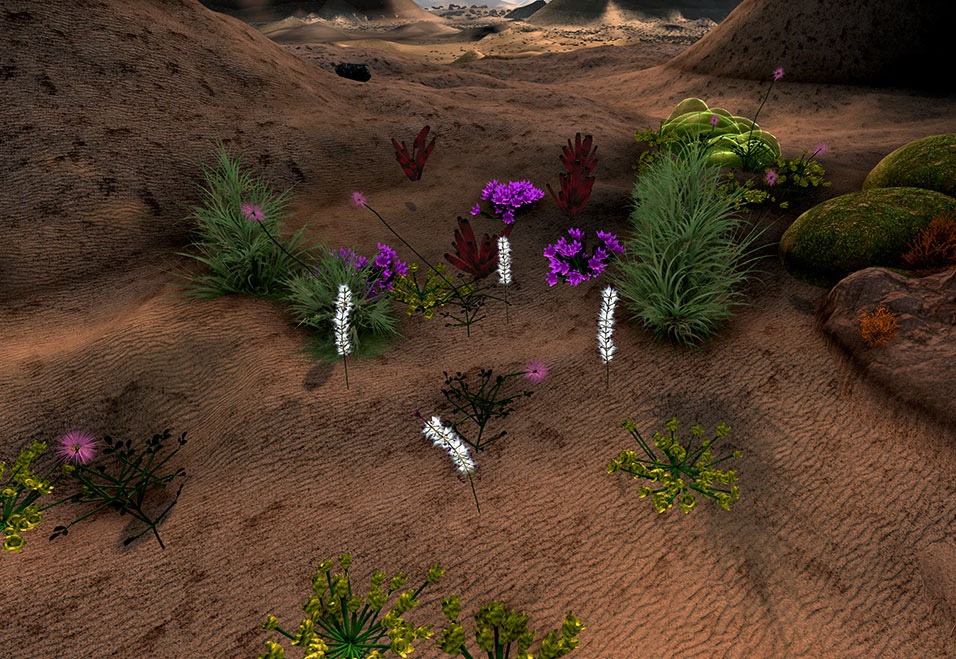
In your work Designing for the Sixth Extinction, you imagine four different species potentially designed by scientists and patented by corporations, maybe as part of biodiversity offsetting, so [they’re] ruining environments somewhere else but releasing these things to preserve nature. You write “In this version of the future, novel companion species are designed by synthetic biologists to support endangered natural species and ecosystems. Financed by corporate biodiversity offset schemes, these patented species are released into the wild. They compensate for biodiversity lost due to monoculture farming of biomass for biofuel and chemical production. For a thriving bioeconomy, the preservation of natural biodiversity is worthwhile not just for sentimental reasons, it is also a valuable DNA library for future biological designs.” Some of your art projects, like this one, are built in the logic of science fiction. Do you like cli-fi and do you find it as the most promising genre for the 21 century? Are you agree that many of your works are structured as a Cli-Fi plot or what they call climate fiction?
I did my Master’s and PhD at the Royal College of Art in a department called “Design Interactions,” where I often used fiction as a storytelling device. My most recent work is less overtly doing this, but I still like fiction and storytelling. The way I think about it now is more along the lines of: “How do we tell stories, and what is the power of storytelling?”—rather than placing myself within the climate-fiction genre.
In The Wilding of Mars, I made choices to limit the story: I don’t show the humans going there, I don’t show how the plants got there, or when it is set. I wanted the storytelling to focus simply on the growth of plants in plant time. There’s just a very subtle indication in the information bar framing the bottom of each video screen that implies a human viewer beyond the one in the gallery. Even that may be too much—I wanted to give people a little bit of context but keep it as minimal as possible. The focus is on the plants as the main characters of the story.
The works I’ve made recently, like Machine Auguries and The Substitute, are fictions because they create artificial reproductions of nature, but they’re not situated within a story. The Wilding of Mars is inspired by Borges’ story The Garden of Forking Paths, where he talks about a garden that exists in time, not in space—which is very interesting! I’ve read things like Stanisław Lem’s Eden, but if I’m reading sci-fi, I prefer social fiction like Margaret Atwood, or John Wyndham’s Trouble with Lichen. I used to read a lot more of it, but not so much lately. These days, I’m more interested in the history of science!
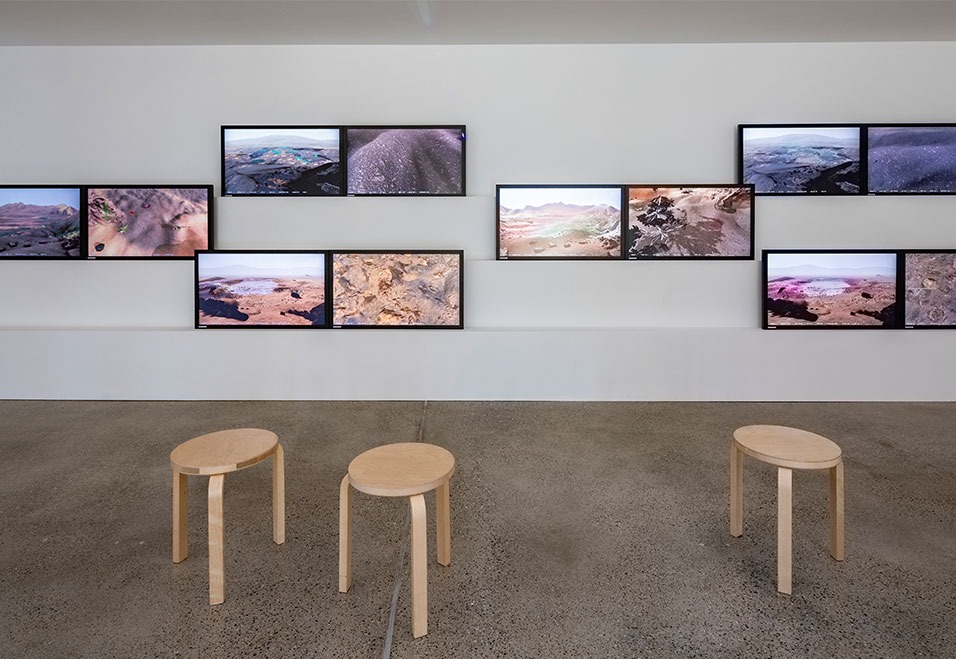
It seems like your passion with gardens has a long story.
Actually, mostly I’m reading gardening blogs now! [laughs] I haven’t abandoned fiction but I like to use it more subtly, whereas my earlier work was much more situated in futures. I’m more interested in the present and multiple parallel presents: different ways the world could be and asking the viewer to reflect on their choices. In The Wilding, two versions of the simulation always run alongside each other to show there’s not one way the world is; there’s always another way that it could be. Occasionally these two worlds do meet, because of the basic context of the planet. Even if plant life does survive and evolve, there are still fundamental planetary conditions that control its path. It’s a story and a garden. It’s the story of a garden.
Part of this was reflecting on how, in a way, I liked to take the trajectory from the present to the future back to the present. But this is semantics. An heterotopia can be located in the future as a storytelling device, or it can be an alternative present, or it can be something else. My more recent works are all heterotopias of sorts, including the most recent, Pollinator Pathmaker. Machine Auguries and The Substitute create other worlds too. For example, they demand a change in our perspective, as they create other, artificial places that encourage reflection on the choices we’re making now—asking for change in the present. It doesn’t really matter where they are situated in time: past, future, or parallel. It’s more about inciting change within us or beyond us.
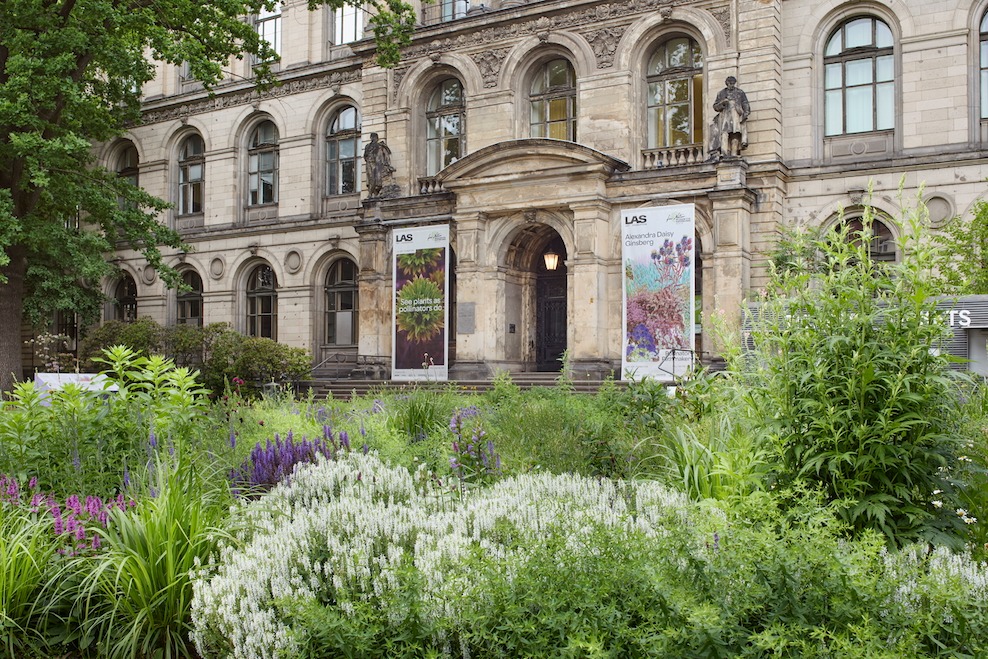
Pollinator Pathmaker is not just about large public gardens: at pollinator.art you have proposed for usage the algorithmic tool for free to make somebody’s own garden artwork. Anyone can simply follow the steps in the algorithmic toolbox to select the garden conditions and play with how the algorithm solves the problem of empathy. It then generates a garden design for you; each design created is a one-off edition of the artwork. Thanks to your 450 digital plant paintings, everyone can explore their own digital garden as a 3D painting or planting plan over the seasons, zoom in or fly through it like a pollinator, learn more about the selected plants, and use ‘pollinator vision’ to imagine how pollinators see it. Then you propose to share or save the link to revisit the garden, download personal planting instructions (complete with a certificate of authenticity for the editioned artwork), and even plant it. It’s interesting how you also create the possibilities to share these tools with others and question the artist’s authority. Rewilding is by its essence not individualistic practice. Do you consider the sharing with others as an important part of your practice?
Pollinator Pathmaker was originally commissioned by the Eden Project with the support of the Garfield Weston Foundation, as part of Create a Buzz (additional partners include the Gaia Art Foundation and collaborators Google Arts & Culture). It differs from rewilding in that these are intended as artificial spaces. I see the artworks as “unnatural gardens designed for nature,” whereas rewilding tries to recreate or simulate nature using potentially more natural processes—letting nature “do its thing,” even if you’re introducing proxies to achieve this. Pollinator Pathmaker artworks are “unnatural”: we’ve brought together species from around the world. The plants we use don’t have to be native, just locally appropriate.
Inviting anyone to get involved comes from my own sense of panic about the climate emergency and making work about the environment rather than for it. I want my practice itself to be sustainable. As an artist, I consume materials, ship work around the world, use electricity and screens; we all need to work on this. Making the big jump to making outdoor, living artwork doesn’t mean it’s necessarily green, because you’ve got plastic plant pots, soil being brought in, watering… every single bit of the supply chain has an impact. There’s a lot to work on. But allowing other people to become involved is about something else.
In the gallery, there’s an intellectual engagement in encountering artworks. But what is the action—“Maybe I should donate to Save the Rhino?” I don’t think that art needs to be useful; that’s not its purpose. But I wanted to create something where people can experience the same sense of empowerment and agency that I feel when making these artworks.
I’ve planted my own Pollinator Pathmaker DIY Edition. I had never planted a garden before, and now my first three living artworks are at the Eden Project, Kensington Gardens for the Serpentine, and one in my own backyard!
I’ve been getting so much joy from watching insects pollinate flowers—trying to identify them and learning how different plants suit differently shaped pollinators. One flower attracts lots of honeybees, while another is covered in flies or wasps… That’s an aesthetic and sublime experience for me. I’m asking the viewer: “Is this art?” Seeing these interactions is a sublime aesthetic experience for me, and I believe that valuing stewardship and caretaking of the world as an aesthetic experience is incredibly important. We’re reminding ourselves why we need to care—and why nature is something of value.
It’s not a garden; it’s art!
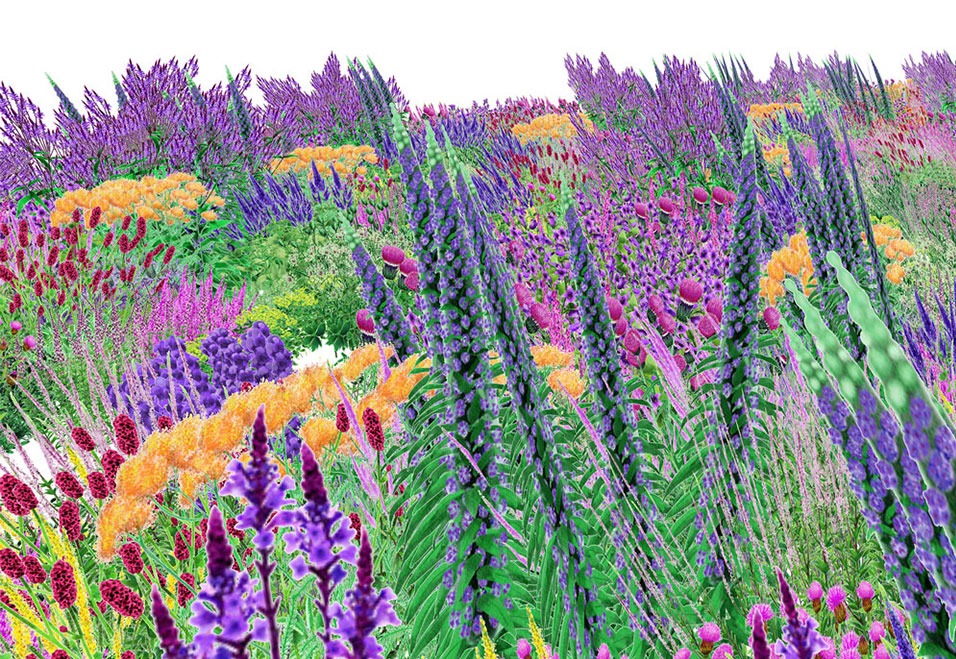
Pollinator Pathmaker is your response to human-made ecological damage. “By creating for other species, it uses art to give us empathy and agency to care for them.” Care is on the center of the project, and the contemporary condition requires the development of the new language of earth-care and care about others, actualised by the recent pandemic. Regarding your shift of interest from the interest in the future to the present, am I right in thinking that this is also the COVID which have influenced you?
Before the pandemic, I worked on four pieces in 2018-19 (Resurrecting the Sublime, Machine Auguries, The Substitute, and The Wilding of Mars). They’re essentially a series that came out of the ideas in my PhD: thinking about the heterotopia and proposing “critical imaginaries”. The Design Interactions department become famous for critical and speculative design. While I love fiction and storytelling and worldbuilding, I never saw myself as a speculative designer. I had the idea of a garden seen from the perspective of others, which lead on from what I was playing with in The Substitute and in Resurrecting the Sublime. In these works, I change the position of the human in relation to the artworks: the rhino looks at you and you’re suddenly put on the spot. In Resurrecting the Sublime (a collaboration with Christina Agapakis/Ginkgo Bioworks and Sissel Tolaas), you sit inside a glass vitrine or diorama and smell an extinct flower and are put on view at the centre of the extinction narrative.
During the first pandemic lockdown, when I was developing the proposal for Pollinator Pathmaker, I thought about my early work Growth Assembly (2009)—a piece that Sascha Pohflepp and I made—and its central idea of a time of scarcity. We envisioned a future where the cost of energy had made global shipping of raw materials and packaged goods impossible, and only the rich could afford traditional, mass-produced commodities. We imagined a new technology quickly forced into reality. From the project text:
“Synthetic biology enables people to harness the natural environment for the production of things. Coded into the DNA of a plant, product parts grow within the supporting system of the plant’s structure. When fully developed, they are stripped like a walnut from its shell, ready for assembly. Shops have evolved into factory farms as licensed products are grown where sold. Large items take time to grow and are more expensive, while small ones are more affordable. The postal service delivers lightweight seed packets for domestic manufacturers. Using biology for the production of consumer goods has reversed the idea of industrial standards, introducing diversity and softness into a realm that once was dominated by heavy manufacturing.”
Growth Assembly is presented as seven watercolour botanical paintings. Each describes the one component of a herbicide sprayer, showing how it is grown on a plant. These parts could then be assembled into a product after harvesting. We chose the herbicide sprayer as an ironic but essential commodity, needed to protect these same delicately engineered horticultural machines from the “older nature”.
During the first lockdown I tried to buy seeds. A lot of other people were also trying to buy seeds, as those who had access felt the need to be closer to nature when everything else was closed. I was thinking about my artworks locked in darkened museums around the world, with no idea when I could get any of it back with no one looking at it. [laughs] I’ve been interested in distributed manufacture for a long time, like in Growth Assembly. Context also affects a work: if you dye a piece of fabric in one country and use the same methods in another place you’ll get a different shade because the water is different. That’s when the idea of the pollinator.art website happened, making the artwork accessble anywhere. So yes, it was a COVID response. How can we still experience an artwork when galleries are closed? We can distribute fabrication and make it locally. All you need is seeds sent in the post (and time to grow) to make a big installation.
It became common already to consider the positive effect of the pandemic on the ecological balance, as nature cleared up and wild animals returned to the cities, and the extermination of species slowed down during the slowdown of human activity that has become known as the “anthropause”. However, the damage done to wildlife in the preceding decade was enormous and since 2010, 467 animal species have been declared extinct. In your project “ (created just before the pandemic, in 2019) you gave a chance to again smell flowers driven to extinction by humans, by using with Sissel Tolaas and Christina Agapakis/Ginkgo Bioworks genetic engineering to resurrect the smell of extinct flowers—so that humans may again experience something we have destroyed—is awesome and perhaps terrifying. Do you think art in general failed in the goal of bringing awareness of societies to the planetary catastrophe?
Pollinator Pathmaker was, in part, a response to a review of a show that The Substitute was in at the Royal Academy, called Eco-Visionaries: Confronting a Planet in a State of Emergency. I shouldn’t be making work in response to a review—but I was struck by the critic’s question: “Why aren’t these artists and designers offering solutions?” She wrote that “Ginsberg offers no answers,” which I agree with! I thought: why, as an artist or designer, would I have the answers or the ability to solve a problem as complex as the climate emergency?
I wrote my PhD about solutionists—synthetic biologists and designers who want to make the world a better place—but they’re materialising their own vision of what “better” means, without necessarily asking who benefits or why they get to decide what is better. I found the expectation that artists should offer solutions quite strange. Solutions come from our roles as citizens, consumers, activists, and from the governments we elect and the policies that create impact. That raises the question: “What and who is this ecological art for, and what is the role of the artist?”
It was the idea of agency that really struck me. What am I asking the viewer to do? I had already made four pieces about loss, and I wanted to try something different. The opportunity to create an artwork about the jeopardy facing insect pollinators came up just before the COVID pandemic began.
The whole NFT thing took off during the pandemic. I can’t say what I would like to say politely, but I do think it’s crazy. [laughs] The money that you spend on buying a JPEG… what are you going to do with a JPEG filed away apart from accrue (or lose) financial value? At least when you collect stickers, you’ve got a sticker! I don’t understand in this age of climate emergency, how burning energy to create collectible JPEGs is seen as an exciting way to create value. It’s a destructive interpretation. I’m playing with digital art where the outcome is a physical thing that helps other species. Why buy an editioned JPEG when you can grow a garden as an edition? It’s a valuable experience to look after other living things. I want to experiment with technological platforms to better understand why we value them, but with an outcome that is generous to humans and to other species.
The rewilding movement has been gaining momentum over the last few years, propelled into the wider public eye by books such as Feral by George Monbiot (2013) and later Wilding by Isabella Tree (2018). How we can use the rewilding movement as a lens for exploring the relationship between humans and ecosystems became a focus of research of many artists all over the world. At the same time environmental art often suffers from didacticism and roll to the side of activism, resulting in a lack of poetics and aesthetic sublime. What practices of contemporary artists using rewilding ideas seem to you the most accurate and valuable?
My collaborator, the late Sascha Pohflepp, and the artist Chris Woebken made a piece for the Walk&Talk festival in São Miguel in 2018 called Declimatised—a long-term botanical installation. It’s in the Parque Urbano de Ponta Delgada on São Miguel, and I’m so curious if it’s still there. It’s such an incredible project.
Agnes Denes’s Wheatfield is, for me, the ultimate artwork. I think it’s important to think of projects like Declimatised and Pollinator Pathmaker as part of the trajectory of land art. I want to see this kind of work as part of that lineage, because they also connect with nature and see the beauty in the natural world—sometimes linking to Zen practice, or drawing attention to the political and social impacts on ecology.
Andy Goldsworthy’s circle of yellow leaves is utterly beautiful and recasts nature—albeit touched by the human hand—as something of beauty. This way of seeing the natural world as something of value is essential to incite in all of us. Yes, it’s a human intervention, but it’s not damaging.
What is a garden? By definition, it’s a kind of damage—because it’s a human-made structure intervening in natural systems. It’s a collection of things. It’s a way of tending nature, whether for mystical purposes, medicinal use, growing food, or for enjoyment—all of these change a habitat for human benefit. That’s one way to define what it is to be human—or at least what humanity has been for the last ten thousand years, since we began cultivating and enclosing nature. The garden is an allegory for humanity.
My father has designed one garden, it’s his life’s work and I grew up amidst its transformation from a scrubby paddock into a garden. Pollinator Pathmaker is perhaps my response to his formal style, which is all topiary [shaped hedges]. My father is an East Asian landscape and painting expert, and a Zen practioner since the 1960s - he lived in a Zen monastery in Kyoto for six months in the 60s. So, while his garden is executed in topiary with “rooms” and formal arrangements, it’s infused with different ideas to those shaping a classical European topiary garden. The argument I’m having with him now, which I find very funny, is that I’ve started created gardens through this anti-design method of the Pollinator Pathmaker algorithm to explore what control means. And of course, my artworks are full of flowers, not hedges. When I started working with synthetic biologists, he would question why. He thought, as you did, that I was having a romance with the engineering of life. But I was thinking about the ethics of the practice, while he was torturing thousands of living organisms (his plants) every day, hacking them into unnatural forms! Pollinator Pathmaker is a completely opposite kind of garden, as it lacks human control. You don’t get to design your own living artwork; the appearance is out of your control. The algorithm instead foregrounds empathy to design planting that maximises diversity of pollinator species, creating gardens that are not for human taste, but pollinators’ tastes. Yet there is a similarity because it’s also controlled and formulaic and formulistic: ultimately, while the algorithm is meant to buffer the garden from my aesthetic choices, the ruleset is created by humans. While his version is the extreme end of control [laughs], with his Zen background, I think he finds the spaces in between the hedges more interesting than the hedges themselves.
Title image: Alexandra Daisy Ginsberg. Photo by Nathalie Théry